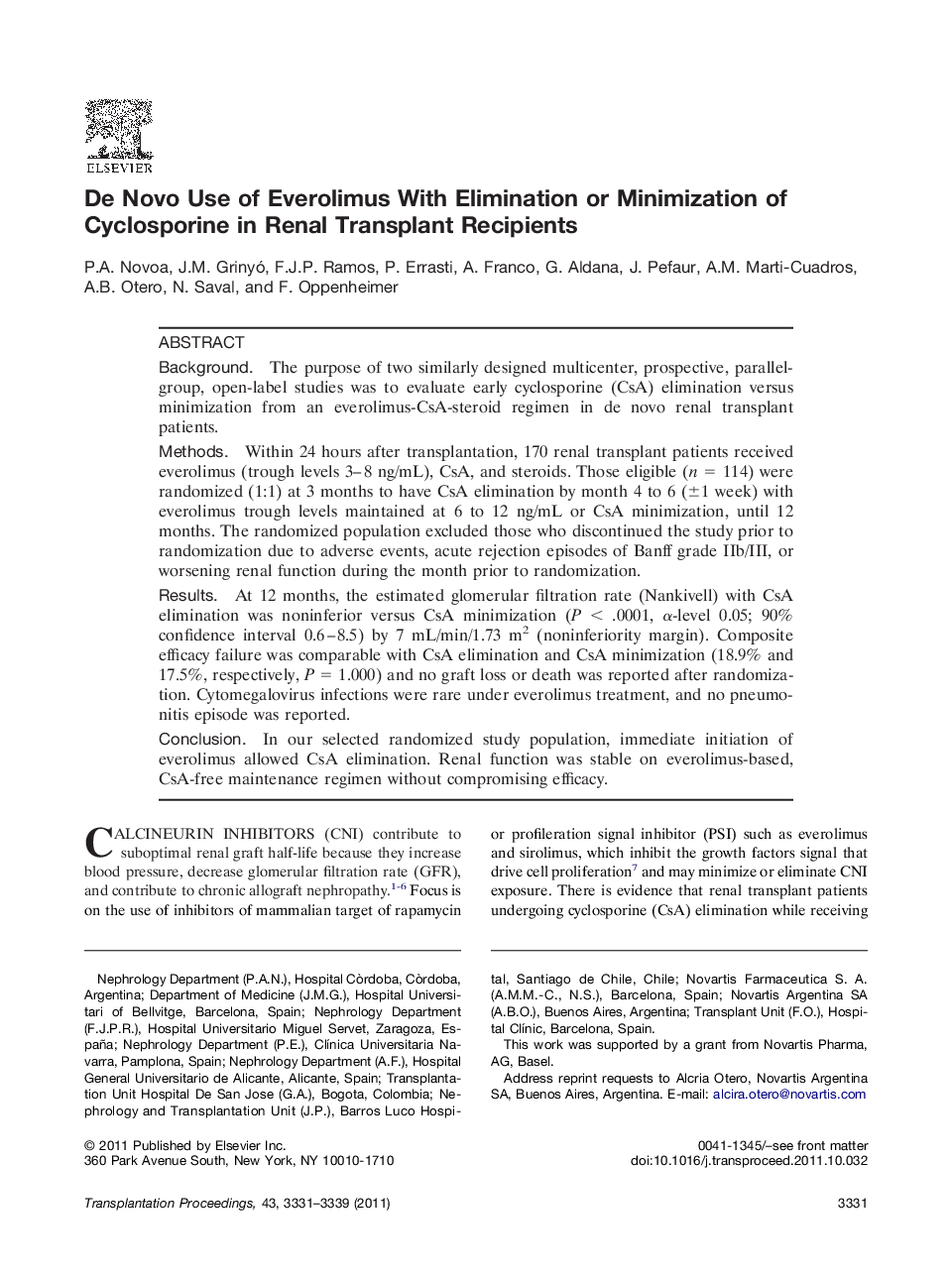| Article ID | Journal | Published Year | Pages | File Type |
|---|---|---|---|---|
| 4258591 | Transplantation Proceedings | 2011 | 9 Pages |
BackgroundThe purpose of two similarly designed multicenter, prospective, parallel-group, open-label studies was to evaluate early cyclosporine (CsA) elimination versus minimization from an everolimus-CsA-steroid regimen in de novo renal transplant patients.MethodsWithin 24 hours after transplantation, 170 renal transplant patients received everolimus (trough levels 3–8 ng/mL), CsA, and steroids. Those eligible (n = 114) were randomized (1:1) at 3 months to have CsA elimination by month 4 to 6 (±1 week) with everolimus trough levels maintained at 6 to 12 ng/mL or CsA minimization, until 12 months. The randomized population excluded those who discontinued the study prior to randomization due to adverse events, acute rejection episodes of Banff grade IIb/III, or worsening renal function during the month prior to randomization.ResultsAt 12 months, the estimated glomerular filtration rate (Nankivell) with CsA elimination was noninferior versus CsA minimization (P < .0001, α-level 0.05; 90% confidence interval 0.6–8.5) by 7 mL/min/1.73 m2 (noninferiority margin). Composite efficacy failure was comparable with CsA elimination and CsA minimization (18.9% and 17.5%, respectively, P = 1.000) and no graft loss or death was reported after randomization. Cytomegalovirus infections were rare under everolimus treatment, and no pneumonitis episode was reported.ConclusionIn our selected randomized study population, immediate initiation of everolimus allowed CsA elimination. Renal function was stable on everolimus-based, CsA-free maintenance regimen without compromising efficacy.
